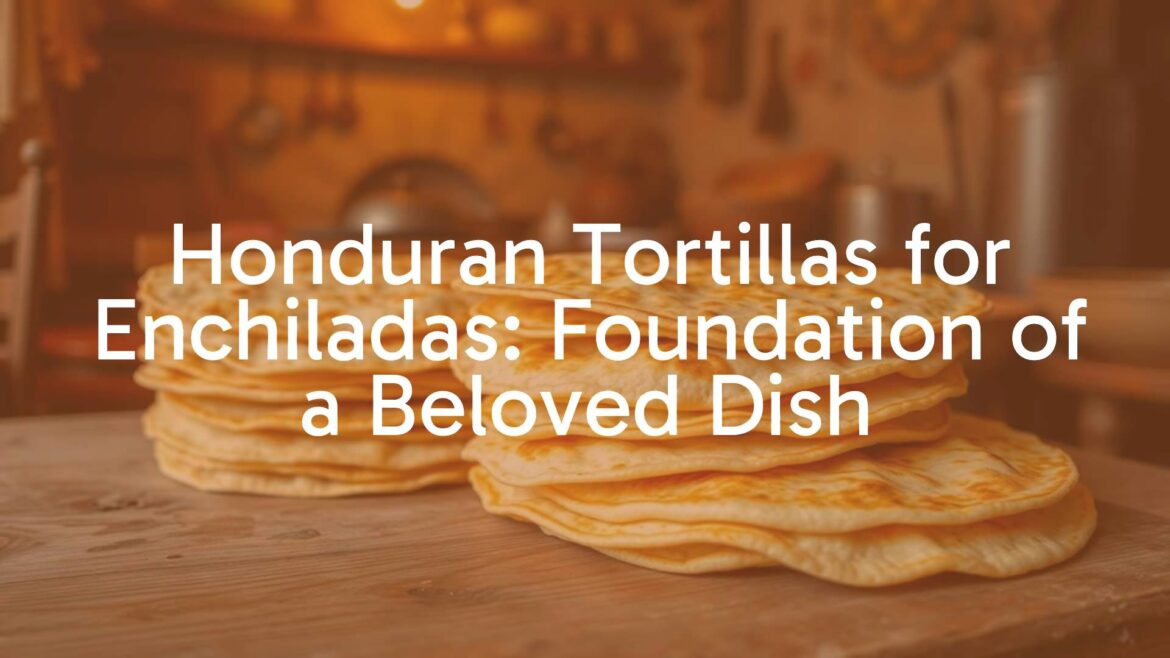Introduction to Honduran Tortillas for Enchiladas
In Honduran cuisine, few staples are as central as the humble tortilla. Of special note are the tortillas crafted specifically for enchiladas, which play a pivotal role in creating one of the country's most beloved street foods. These tortillas aren't just a vessel for carrying fillings; they are an essential component that helps distinguish Honduran enchiladas from their counterparts across Latin America.
Origins and Historical Background
Tortillas have been a cornerstone of indigenous diets in the region for centuries, long before the arrival of Europeans. The tradition of making tortillas for enchiladas likely evolved as a local adaptation, utilizing the abundance of corn to produce a thicker, sturdier base suitable for holding generous toppings and sauces characteristic of Honduran enchiladas. Over generations, these specialized tortillas became synonymous with the dish itself, helping to define Honduran street and home cooking traditions.
Characteristic Ingredients and Texture
Unlike the soft, pliable tortillas used elsewhere for wrapping, the tortillas for Honduran enchiladas are made with a more robust texture. Corn masa—ground maize dough—serves as the primary ingredient, often with a touch of salt. What sets these tortillas apart is their slightly thicker, firmer build, designed to maintain structural integrity even after being fried or toasted and loaded with an array of toppings. Frying the tortillas not only enhances their flavor but also ensures they do not become soggy beneath hearty sauces and fixings.
Cultural Significance and Social Traditions
The ritual of preparing tortillas for enchiladas is woven into Honduran family gatherings, festive occasions, and street markets. Their preparation often brings people together, whether it's a family member patting the dough into rounds or a vendor frying them in preparation for the lunchtime crowd. In many communities, sharing enchiladas made with homemade tortillas is a sign of hospitality and tradition—one that connects generations.
Styles and Regional Twists
While the foundation remains consistent throughout Honduras, regional preferences may present subtle differences. In some areas, tortillas for enchiladas are slightly larger or smaller, while others might incorporate a hint of local spices or anise seed to create a signature flavor. The method of frying can also differ, with some cooks opting for shallow pan-frying and others preferring a deep, golden crispness.
Traditional Serving Practices and Enjoyment
Tortillas for enchiladas are typically served warm, providing a sturdy yet tender base for layers of seasoned ground beef, pickled vegetables, cheese, and a vibrant tomato sauce. They are most commonly enjoyed as a hearty snack or meal, especially during festivals, family reunions, or as a comforting street-side treat. Pairing these enchiladas with a side of fresh cabbage salad or pickled onions is a common practice that complements their rich flavors.
Tips for Appreciating Authentic Honduran Tortillas for Enchiladas
To fully appreciate the unique appeal of Honduran enchiladas, pay attention to the texture and flavor of the tortilla itself. The best versions will be satisfyingly crunchy yet not brittle, providing an ideal contrast with their toppings. Whether eaten at a bustling market stall or at home with family, the tortilla’s role is integral, underscoring both the history and evolution of Honduran culinary identity.


